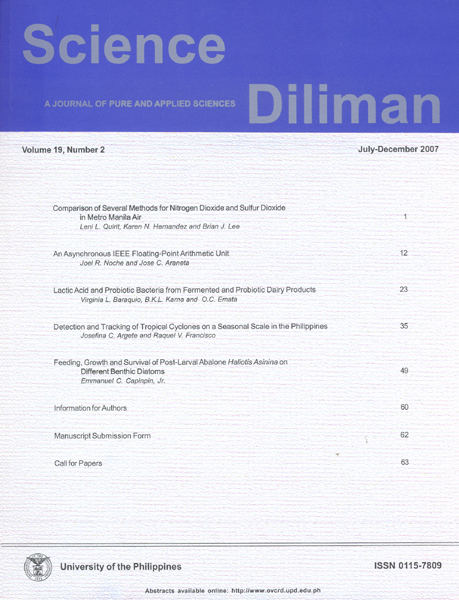An Asynchronous IEEE Floating-Point Arithmetic Unit
Abstract
An asynchronous floating-point arithmetic unit is designed and tested at the transistor level using Cadence software. It uses CMOS (complementary metal oxide semiconductor) and DCVS (differential cascode voltage switch) logic in a 0.35 µm process using a 3.3 V supply voltage, with dual-rail data and single-rail control signals using four-phase handshaking.Using 17,085 transistors, the unit handles single-precision (32-bit) addition/subtraction, multiplication, division, and remainder using the IEEE 754-1985 Standard for Binary Floating-Point Arithmetic, with rounding and other operations to be handled by separate hardware or software. Division and remainder are done using a restoring subtractive algorithm; multiplication uses an additive algorithm. Exceptions are noted by flags (and not trap handlers) and the output is in single-precision.
Previous work on asynchronous floating-point arithmetic units have mostly focused on single operations such as division. This is the first work to the authors' knowledge that can perform floating-point addition, multiplication, division, and remainder using a common datapath.
Published
2008-01-15
Issue
Section
Articles
Keywords
Asynchronous logic circuits; floating point arithmetic; calculation times
Submission of a manuscript implies: that the work described has not been published before (except in the form of an abstract or as part of a published lecture, review, or thesis); that it is not under consideration for publication elsewhere; that its publication has been approved by all co-authors, if any, as well as by the responsible authorities at the institute where the work has been carried out; that, if and when the manuscript is accepted for publication, the authors agree to the automatic transfer of the copyright to the publisher; that the manuscript will not be published elsewhere in any language without the consent of the copyright holders; that written permission of the copyright holder is obtained by the authors for material used from other copyrighted sources; and that any costs associated with obtaining this permission are the authors’ responsibility.



